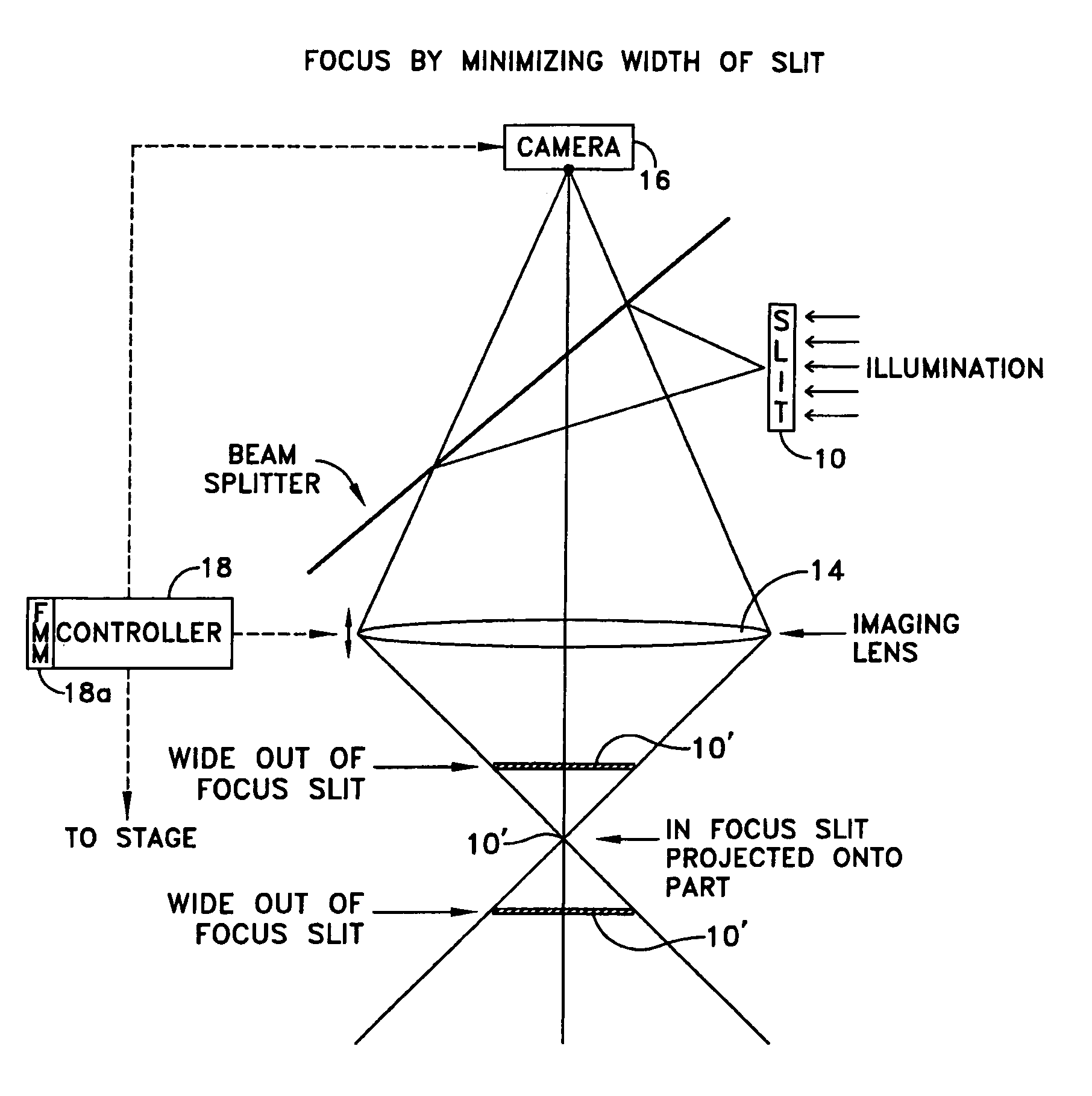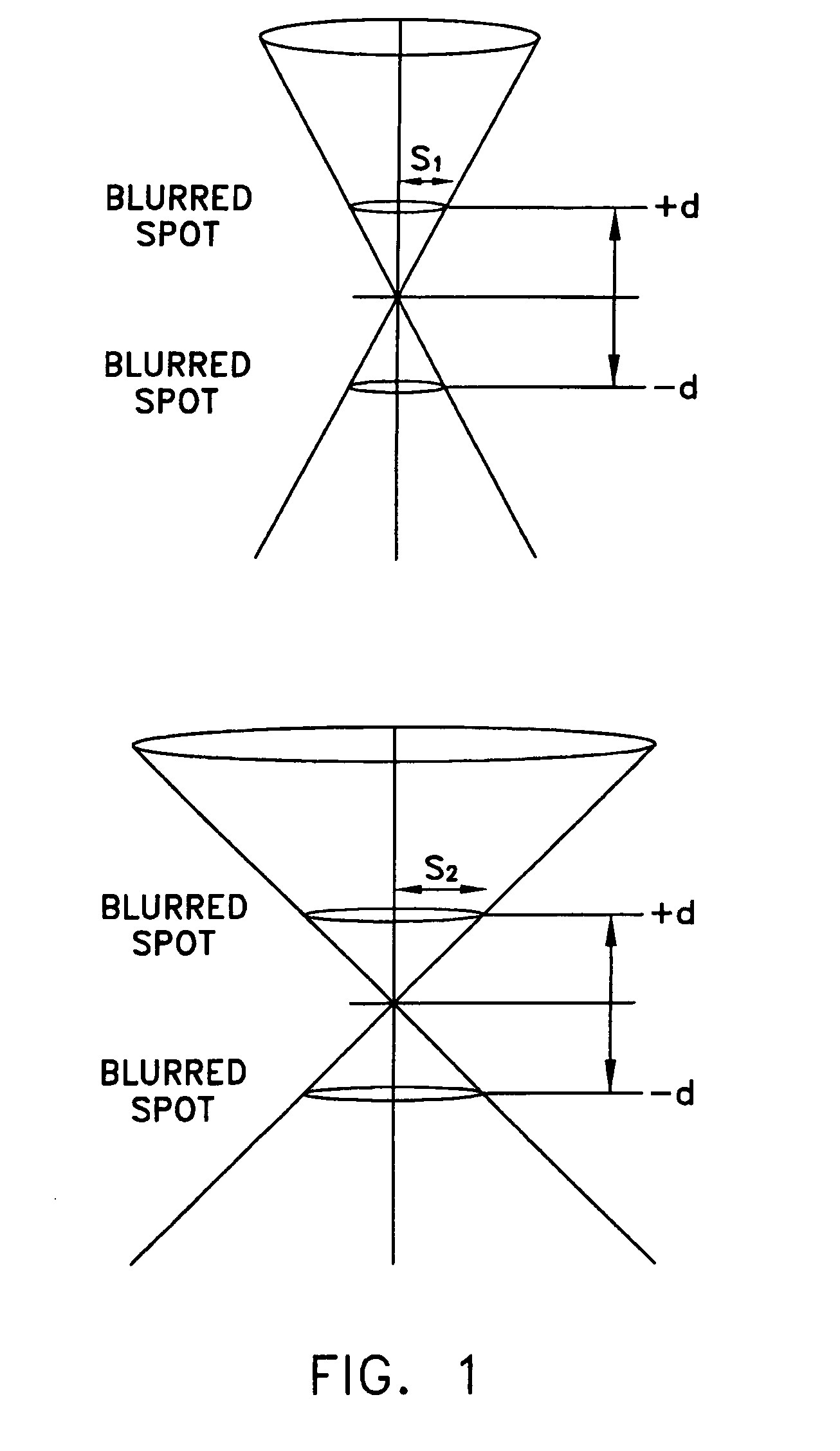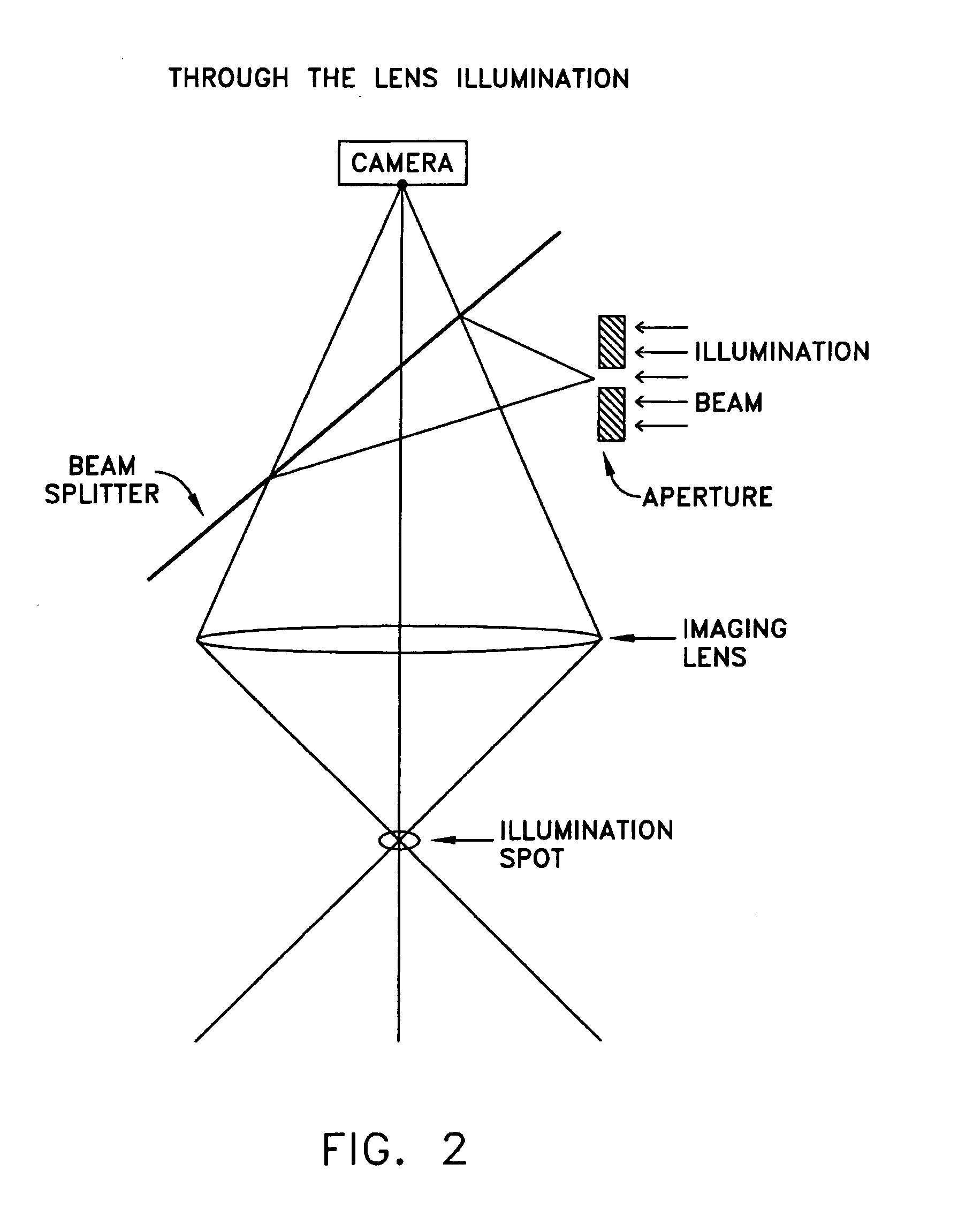Method for optimizing inspection speed in low, and fluorescent light applications without sacrificing signal to noise ratio, resolution, or focus quality
a low-speed, fluorescent light technology, applied in the direction of instruments, television systems, optical elements, etc., can solve the problems of not being cost effective or practical to increase the size of the laser, not being feasible, practical or cost-effective to increase the illumination power, and the life of the bulb also becoming an issue in high-power illumination systems, so as to increase the life of the bulb, reduce the intensity of illumination, and increase the effect of camera signal
- Summary
- Abstract
- Description
- Claims
- Application Information
AI Technical Summary
Benefits of technology
Problems solved by technology
Method used
Image
Examples
Embodiment Construction
1. Focus by Minimizing Width of Target
[0056]Referring to FIG. 5, in accordance with this method, a target 10 in the form of a slit is projected by way of a beam splitter 12 through the imaging lens 14 of an inspection camera 16 onto a part or workpiece supported by a scanning stage (not shown). While the illustrated target is a slit, it could just as well be a small dot or an edge. In any event, at all positions along the Z-axis, light from the target 10 is present as shown by the target images 10′. As seen in FIG. 5, when the imaging optics are out of focus in the Z direction, the target image 10′ is relatively wide. On the other hand when those optics are in focus, the image 10′ has minimum width. Light from the part including the target image is reflected back through lens 14 and the beam splitter 12 to camera 16 which is preferably a CCD camera (see my U.S. Pat. Nos. 5,119,434 and 4,697,088) with high NA (0.05 or larger) optics. Thus, unlike the prior system described above in c...
PUM
| Property | Measurement | Unit |
|---|---|---|
| depth of focus | aaaaa | aaaaa |
| depth of focus | aaaaa | aaaaa |
| depth of focus | aaaaa | aaaaa |
Abstract
Description
Claims
Application Information
 Login to View More
Login to View More - R&D
- Intellectual Property
- Life Sciences
- Materials
- Tech Scout
- Unparalleled Data Quality
- Higher Quality Content
- 60% Fewer Hallucinations
Browse by: Latest US Patents, China's latest patents, Technical Efficacy Thesaurus, Application Domain, Technology Topic, Popular Technical Reports.
© 2025 PatSnap. All rights reserved.Legal|Privacy policy|Modern Slavery Act Transparency Statement|Sitemap|About US| Contact US: help@patsnap.com



